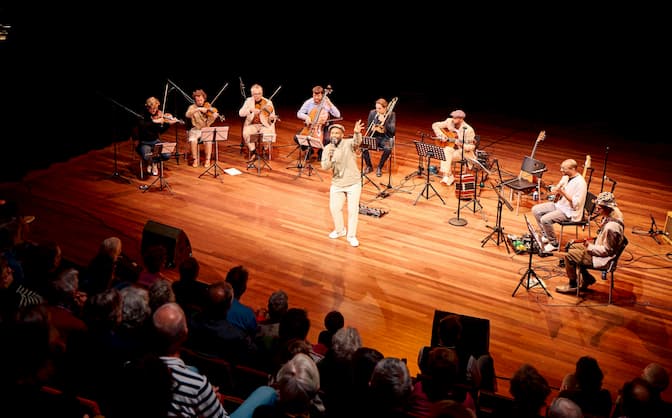Calendar
Filters

Concertgebouw, Amsterdam
Jaap van Zweden conducts Wagner, Respighi
Leonidas Kavakos performs Korngold’s Violin Concerto
Starting € 29

Concertgebouw, Amsterdam
Annual Gala featuring Jaap van Zweden
Leonidas Kavakos performs Korngold's cinematic Violin Concerto
Starting € 109

Concertgebouw, Amsterdam
Jaap van Zweden conducts Wagner, Respighi
Leonidas Kavakos performs Korngold’s Violin Concerto
Starting € 29

Concertgebouw, Amsterdam
Beethoven's Violin Concerto
With Nikolaj Szeps-Znaider, Antonio Pappano conducts Elgar
Starting € 29

Concertgebouw, Amsterdam
Beethoven's Violin Concerto
With Nikolaj Szeps-Znaider, Antonio Pappano conducts Elgar
Starting € 29

Concertgebouw, Amsterdam
Beethoven's Violin Concerto
With Nikolaj Szeps-Znaider, Antonio Pappano conducts Elgar
Starting € 29

Kleine Zaal - Het Concertgebouw, Amsterdam
Close-up: The Ballets Russes
Concertgebouw Orchestra musicians perform Stravinsky, Debussy, Prokofiev and Ravel in the Recital Hall
Starting € 38

Concertgebouw, Amsterdam
Klaus Mäkelä conducts Bruckner
Anton Bruckner’s monumental Symphony No. 8
Starting € 29

Concertgebouw, Amsterdam
Klaus Mäkelä conducts Bruckner
Anton Bruckner’s monumental Symphony No. 8
Starting € 29

Concertgebouw, Amsterdam
Klaus Mäkelä conducts Bruckner
Anton Bruckner’s monumental Symphony No. 8
Starting € 29

Philharmonie Luxembourg, Luxembourg
On tour: Klaus Mäkelä conducts Bruckner
Anton Bruckner’s monumental Symphony No. 8

Philharmonie de Paris, Paris - France
On tour: Klaus Mäkelä conducts Bruckner
Anton Bruckner’s monumental Symphony No. 8

Kölner Philharmonie, Cologne - Germany
On tour: Klaus Mäkelä conducts Bruckner
Anton Bruckner’s monumental Symphony No. 8

Elbphilharmonie, Hamburg - Germany
On tour: Klaus Mäkelä conducts Bruckner
Anton Bruckner’s monumental Symphony No. 8

Concertgebouw, Amsterdam
Rafael Payare conducts Shostakovich’s Symphony No. 10
and works by Sofia Gubaidulina and Frank Martin
Starting € 20

Concertgebouw, Amsterdam
Rafael Payare conducts Shostakovich’s Symphony No. 10
and works by Sofia Gubaidulina and Frank Martin
Starting € 20

Concertgebouw, Amsterdam
Essentials: Shostakovich’s Tenth
Rafael Payare conducts Shostakovich’s Symphony No. 10
Starting € 20

De Meervaart, Meer en Vaart 300
Tomorrow & Yesterday
Time travelling with violinist Leonie Bot and saxophonist composer Olaf Zwetsloot in the Meervaart Theatre

Concertgebouw, Amsterdam
Riccardo Chailly conducts Prokofiev
Prokofiev's cantata Alexander Nevsky and the Fourth Symphony
Starting € 29

Concertgebouw, Amsterdam
Riccardo Chailly conducts Prokofiev
Prokofiev's cantata Alexander Nevsky and the Fourth Symphony
Starting € 29